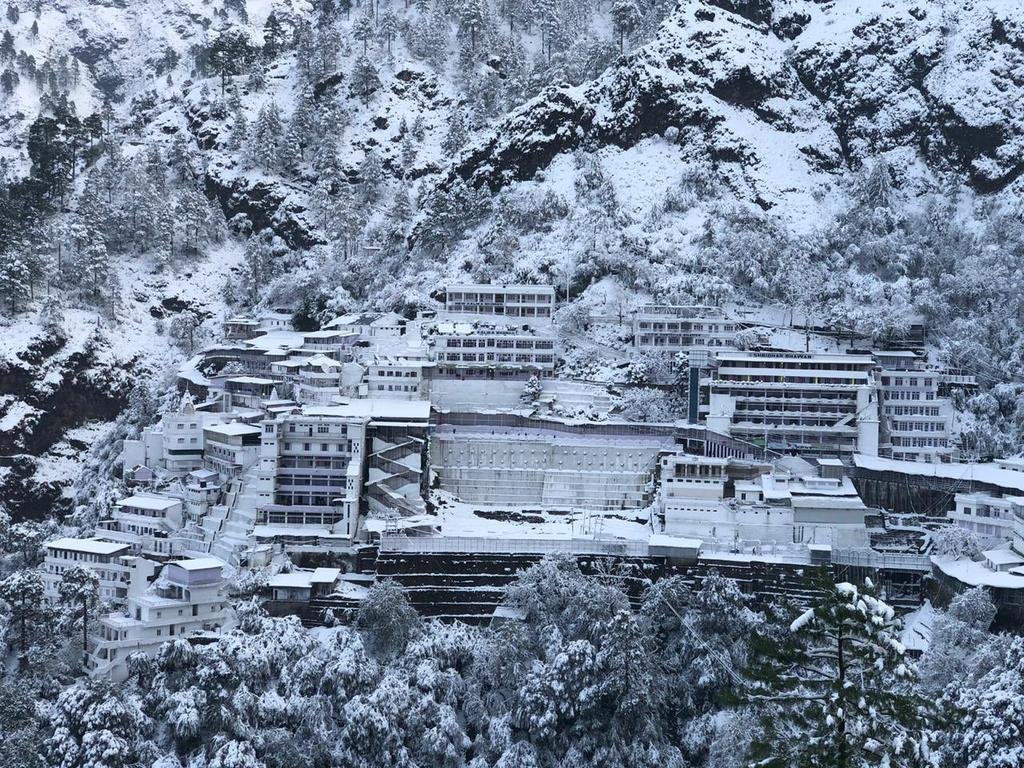India’s cultural heritage and spiritual essence lie not only architectural marvels but also repositories of immense wealth – its richest temples. These sacred sites stand as testaments to centuries of devotion, offerings, and the enduring power of faith. While saying exact wealth can be challenging due to varying valuation methods, here’s a glimpse into 10 of India’s richest temples, offering insights into their history, significance, and estimated value:
Sri Padmanabhaswamy Temple, Thiruvananthapuram, Kerala: Estimated Value: ₹1.2 lakh crore (US$16 billion). Shrouded in mystery and legend, this temple dedicated to Lord Vishnu holds unimaginable riches. Recent discoveries within its hidden vaults revealed treasures in gold, precious stones, and artifacts estimated to be worth over a trillion dollars, although access and valuation remain debated.
Tirumala Tirupati Venkateswara Temple, Andhra Pradesh: Annual Donation Income: ₹650 crore (US$880 million). Atop Tirumala hills, this iconic temple dedicated to Lord Venkateswara is one of the most visited pilgrimage sites globally. Devotees offer vast amounts of gold, cash, and valuables, making it a major source of revenue for the Tirumala Tirupati Devasthanams (TTD) trust.
Vaishno Devi Temple, Katra, Jammu and Kashmir: Estimated Worth: ₹500 crore (US$670 million). Nestled amidst the Himalayas, this cave shrine dedicated to Goddess Shakti attracts millions annually. Offerings in cash, gold, and kind contribute significantly to its wealth, enabling the temple trust to undertake various charitable and developmental activities.
Shirdi Sai Baba Temple, Shirdi, Maharashtra: Estimated Worth: ₹320 crore (US$430 million). This temple dedicated to the revered saint Sai Baba draws devotees from all walks of life seeking blessings and solace. Offerings in cash, gold, and land have contributed to its wealth, which the temple trust utilizes for various social welfare initiatives.
Siddhivinayak Temple, Mumbai, Maharashtra: Estimated Worth: ₹125 crore (US$170 million). Located in Mumbai’s heart, this temple dedicated to Lord Ganesha is a popular pilgrimage site for celebrities and locals alike. Devotees offer various valuables, including gold and diamonds, contributing to its financial strength. The temple trust utilizes these funds for social welfare and temple maintenance.
Jagannath Temple, Puri, Odisha: Estimated Worth: ₹150 crore (US$200 million). Dedicated to Lord Jagannath, this ancient temple is renowned for its annual Rath Yatra festival, where colossal chariots carrying deities are pulled through the streets. Offerings form a significant source of income, used for temple upkeep and various charitable initiatives.
Guruvayoor Temple, Thrissur, Kerala: Estimated Worth: ₹2500 crore (US$330 million). Dedicated to Lord Krishna in his child form, this temple attracts throngs of devotees seeking blessings and healing. Its strict dress code and enchanting rituals add to its mystique. Offerings in cash, gold, and land contribute to its wealth, managed by the temple trust for various purposes.
Mahakali Temple, Kolkata, West Bengal: Estimated Worth: ₹100 crore (US$130 million). Located in Kolkata’s bustling Kalighat neighborhood, this temple dedicated to Goddess Kali is a significant pilgrimage site for devotees from various faiths. Animal sacrifices were once associated with the temple, though largely replaced by symbolic offerings.
Golden Temple, Amritsar, Punjab: Annual Income: ₹500 crore (US$670 million). This iconic Sikh pilgrimage site, adorned with shimmering gold and reflecting peacefully in the Sarovar pool, attracts millions of visitors annually. Langar, the free community kitchen serving thousands daily, exemplifies its commitment to service. Donations and offerings contribute to its upkeep and various charitable initiatives.
Somnath Temple, Gujarat: Estimated Worth: ₹60 crore (US$80 million). Located on the coast of Gujarat, this temple dedicated to Lord Shiva holds historical and religious significance. Offerings in cash, gold, and land contribute to its upkeep and ongoing projects, including reconstruction after past destruction.
While their wealth is staggering and their stories captivating, it’s crucial to remember that these temples are much more than repositories of riches. They represent centuries of cultural heritage, deep-rooted faith, and serve as spiritual sanctuaries for millions. Beyond the gleaming jewels and opulent offerings lies a legacy of devotion, tradition, and an intrinsic thread woven into the very fabric of India’s soul. So, while appreciating their undeniable financial significance, let us also remember the true essence of these temples , their role as testaments to a nation’s enduring faith and cultural heritage.

